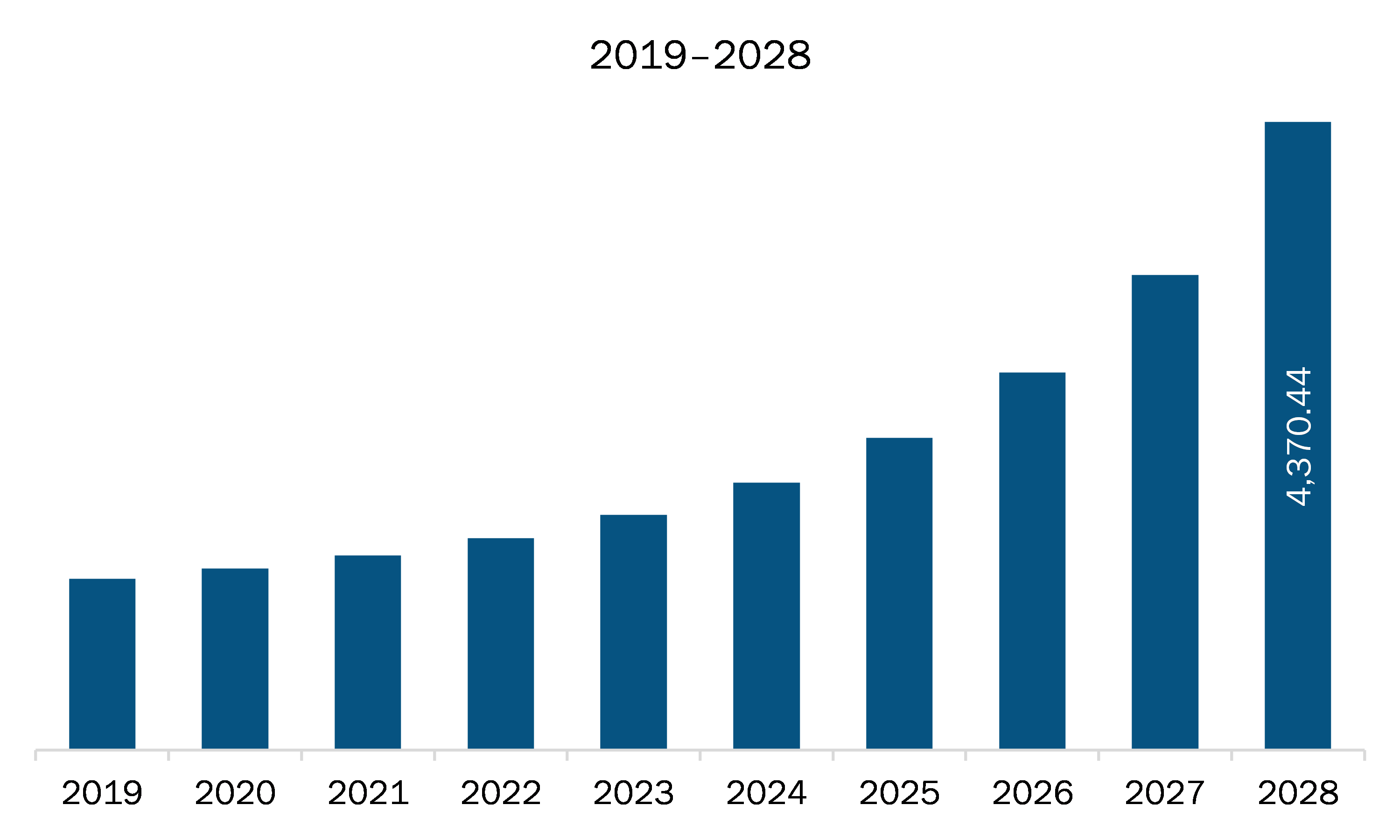The North America open-source intelligence market is expected to grow from Euro 1,354.23 million in 2021 to Euro 4,370.44 million by 2028; it is estimated to grow at a CAGR of 18.2% from 2021 to 2028.
The US, Canada, and Mexico are economies in North America. Rising government initiatives to protect individual and organizations data is expected to surge the market in coming years. Data security is vital for businesses and individuals. Government bodies across the region have been taking several initiatives since past few years to implement strict data protection regulations across their respective countries. The data protection law enforcement committee in North America is trained to us-e open-source intelligence (OISNT) in their investigations for efficient results. The US government protects the data of various forms in the country by implementing several laws. These acts regulates the collection, use, and disclosure of personal information; limits unlawful access to computers; and restricts phishing emails from crashing into personal and official systems across the country. Thus, the rising government initiatives to protect both personal and organizational data from theft are bolstering the adoption of open-source intelligence across government intelligence agencies, military & defense intelligence agencies, cybersecurity organizations, law enforcement agencies, and private specialized businesses across the North America.
In case of COVID-19, North America is highly affected specially the US. The unprecedented rise in number of COVID-19 cases across the US and the subsequent lockdown to combat the spread of the virus across the country in the first two quarters of 2020 have led to numerous businesses to come on a standby situation. Technological investments in 2020 experienced a dip owing to the above-mentioned reasons, thereby impacting the growth of the market. However, the sudden lockdown has impacted the way businesses work thereby leading to the adoption of digital platforms for carrying out business operation from remote locations. For instance, in July 2021, the annual "Cost of a Data Breach" report from IBM Security projects that an average data breach will cost $4.24 million per event in 2021, up 10% from 2020 when 1,000 to 100,000 records are involved. The company's abrupt operational shifts because of the pandemic, stay-at-home orders, and the need to swiftly turn operations remote resulted in higher expenses and increased difficulties in containing a security incident after it had occurred has contributed to the increase in data breaching cost. Thus, to avoid such hefty cost organizations are rapidly adopting solutions to secure all data on their private and public servers. This is thus created new opportunities for the open-source intelligence market thereby positively impacting the growth of the market in the region.
With the new features and technologies, vendors can attract new customers and expand their footprints in emerging markets. This factor is likely to drive the North America open-source intelligence market. The North America open-source intelligence market is expected to grow at a good CAGR during the forecast period.

- This FREE sample will include data analysis, ranging from market trends to estimates and forecasts.
North America Open-Source Intelligence Market Segmentation
North America Open-Source Intelligence Market – By Technique
- Text Analytics
- Video Analytics
- Social Media Analytics
- Geospatial Analytics
- Security Analytics
- Others
North America Open-Source Intelligence Market – By End-user
- Government Intelligence Agencies
- Military and Defense Intelligence Agencies
- Cyber Security Organizations
- Law Enforcement Agencies
- Private Specialized Business
- Financial Services
- Others
North America Open-Source Intelligence Market, by Country
- US
- Canada
- Mexico
North America Open-Source Intelligence Market -Companies Mentioned
- Alfresco Software, Inc.
- EXPERT SYSTEM S.P.A.
- Google LLC
- NetSentries Technologies FZCO
- Palantir Technologies
- RECORDED FUTURE, INC.
- Thales Group
North America Open-Source Intelligence Report Scope
| Report Attribute | Details |
|---|---|
| Market size in 2021 | Euro 1,354.23 Million |
| Market Size by 2028 | Euro 4,370.44 Million |
| CAGR (2021 - 2028) | 18.2% |
| Historical Data | 2019-2020 |
| Forecast period | 2022-2028 |
| Segments Covered |
By Technique
|
| Regions and Countries Covered |
North America
|
| Market leaders and key company profiles |
|
- Historical Analysis (2 Years), Base Year, Forecast (7 Years) with CAGR
- PEST and SWOT Analysis
- Market Size Value / Volume - Regional, Country
- Industry and Competitive Landscape
- Excel Dataset
Recent Reports
Testimonials
Reason to Buy
- Informed Decision-Making
- Understanding Market Dynamics
- Competitive Analysis
- Identifying Emerging Markets
- Customer Insights
- Market Forecasts
- Risk Mitigation
- Boosting Operational Efficiency
- Strategic Planning
- Investment Justification
- Tracking Industry Innovations
- Aligning with Regulatory Trends






















 Get Free Sample For
Get Free Sample For